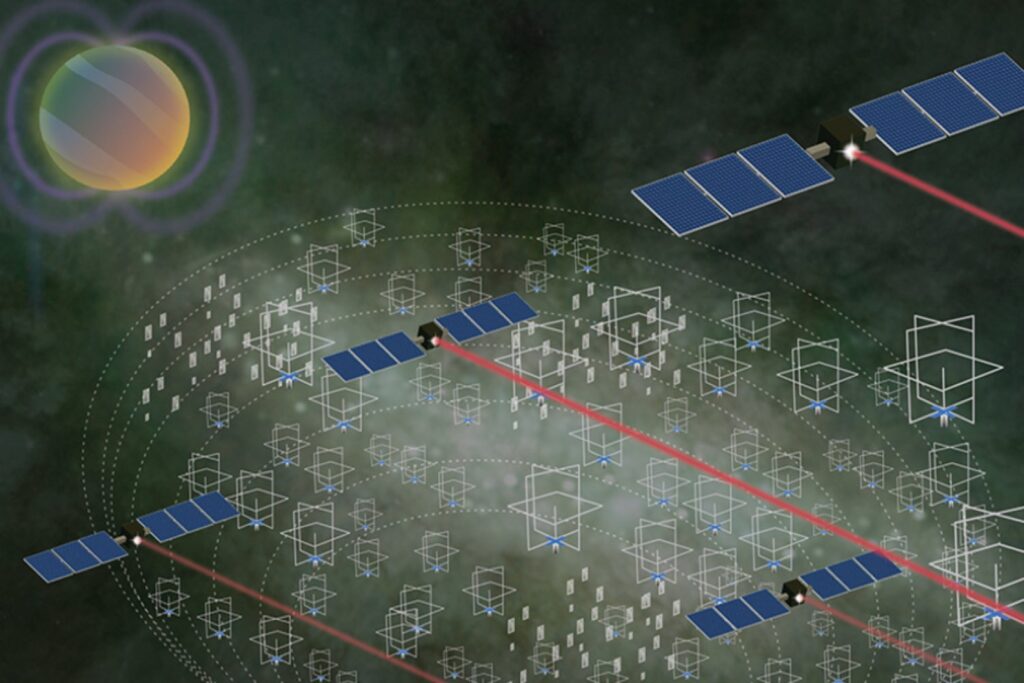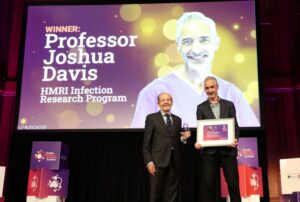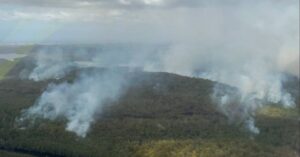
For centuries, humans have gazed at the stars, seeking to unlock the mysteries of the universe. From the naked eye to advanced telescopes, each method has offered new insights into celestial phenomena like X-ray pulsars and gamma-ray bursts. Yet, one aspect remains elusive: the low-frequency radio sky. Now, a groundbreaking collaboration between MIT Lincoln Laboratory, the MIT Haystack Observatory, and Lowell Observatory aims to change that.
These institutions are working on a NASA-funded concept study known as the Great Observatory for Long Wavelengths, or GO-LoW. The project outlines a revolutionary method to observe the universe at previously unseen low frequencies using a constellation of thousands of small satellites. These frequencies, with wavelengths ranging from 15 meters to several kilometers, require an enormous telescope to be observed clearly.
Breaking New Ground in Radio Astronomy
“GO-LoW will be a new kind of telescope, made up of many thousands of spacecraft that work together semi-autonomously, with limited input from Earth,” explains Mary Knapp, the principal investigator for GO-LoW at the MIT Haystack Observatory. “GO-LoW will allow humans to see the universe in a new light, opening up one of the very last frontiers in the electromagnetic spectrum.”
The challenge of observing the low-frequency radio sky arises from Earth’s ionosphere, a layer of charged particles that blocks these radio waves. Consequently, a space-based instrument is essential. Additionally, traditional dish antenna designs would require telescopes several kilometers in length, which is impractical. GO-LoW will utilize interferometry, a technique that combines signals from multiple spatially separated receivers, effectively creating one large telescope. This method has previously been used to capture the first image of a black hole and an image of the first known extrasolar radiation belts.
Exploring Exoplanets and Habitability
Melodie Kao from Lowell Observatory highlights the potential discoveries GO-LoW could make. “The radio wave aurora around an exoplanet carries important information, such as whether or not the planet has a magnetic field, how strong it is, how fast the planet is rotating, and even hints about what’s inside,” she notes. “Studying exoplanet radio aurorae and the magnetic fields they trace is an important piece of the habitability puzzle, and it’s a key science goal for GO-LoW.”
Recent technological advancements, such as the declining cost of mass-produced small satellites and the rise of mega-constellations, make GO-LoW feasible. The project would be the first mega-constellation to use interferometry for scientific purposes.
Launch and Deployment Strategy
The GO-LoW constellation will be constructed through several launches, each carrying thousands of spacecraft. Once in low-Earth orbit, these spacecraft will be refueled before traveling to their final destination, an Earth-sun Lagrange point. These points are areas in space where gravitational forces are balanced, allowing spacecraft to maintain position with minimal fuel. At this distance from Earth, approximately 93 million miles, there will be significantly less radio-frequency interference, enhancing GO-LoW’s measurements.
“GO-LoW will have a hierarchical architecture consisting of thousands of small listener nodes and a smaller number of larger communication and computation nodes (CCNs),” explains Kat Kononov from Lincoln Laboratory’s Applied Space Systems Group. “The listener nodes are small, relatively simple 3U CubeSats that collect data with their low-frequency antennas, store it, and periodically send it to their communication and computation node via a radio link.”
Future Prospects and Scientific Breakthroughs
At full capacity, with approximately 100,000 listener nodes, the GO-LoW constellation is expected to detect exoplanets with magnetic fields within 5 to 10 parsecs, many for the first time. The team recently published findings from Phase I of their study, identifying a vector sensor as the optimal antenna type for this application. In 2024, Lincoln Laboratory designed a compact deployable version of this sensor for space use.
Currently, the team is advancing to Phase II, which involves building a multi-agent simulation of constellation operations. “What we learned during the Phase I study is that the hard part for GO-LoW is not any specific technology… the hard part is the system: the system engineering and the autonomy to run the system,” says Knapp. “So, how do we build this constellation such that it’s a tractable problem? That’s what we’re exploring in this next part of the study.”
GO-LoW represents one of many civil space programs at Lincoln Laboratory, leveraging technologies initially developed for national security to support new scientific missions. “By adapting these capabilities to serve new stakeholders, the laboratory helps open novel frontiers of discovery while building resilient, cost-effective systems that benefit the nation and the world,” says Laura Kennedy, deputy lead of Lincoln Laboratory’s Civil Space Systems and Technology Office.
As Kat Kononov aptly puts it, “Like landing on the moon in 1969, or launching Hubble in the 1990s, GO-LoW is envisioned to let us see something we’ve never seen before and generate scientific breakthroughs.”






